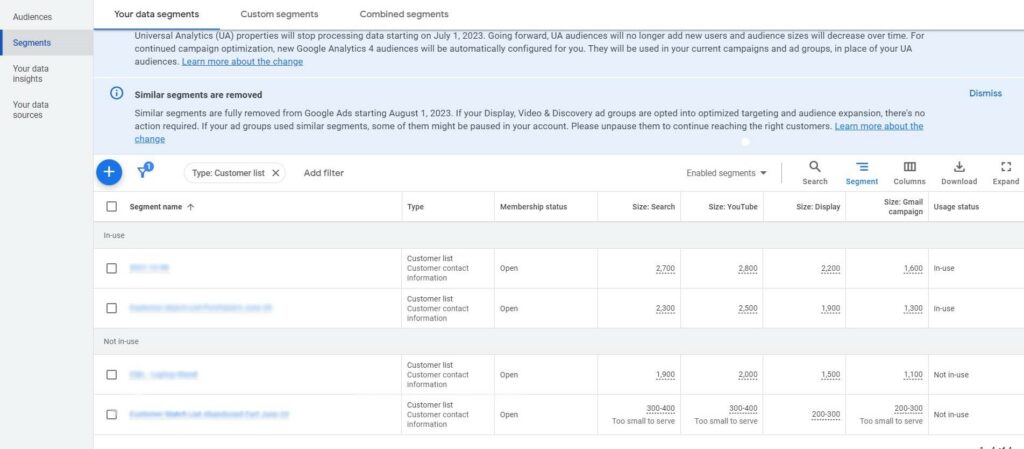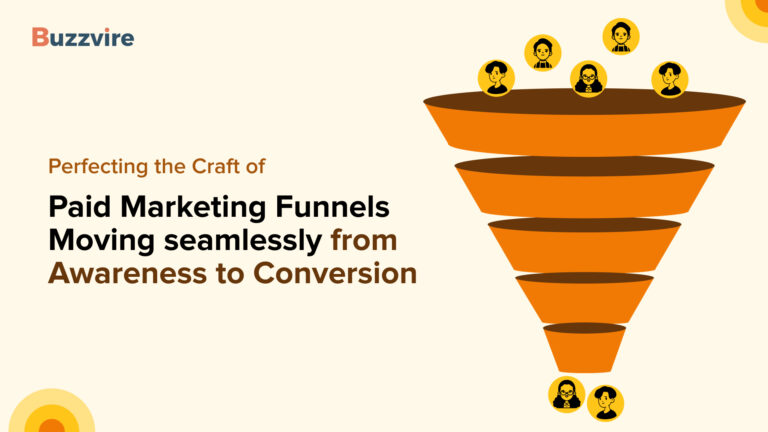
Remarketing is like planning to visit that interesting person you met at the last party. You both had an engaging conversation, but something came up, and they probably got busy. The good thing is you have their number or email. Since you made contact earlier, they would be okay with you contacting them to continue your conversation. Sounds cool? Remarketing is similar. You reconnect with a website user or someone who has shown interest in your business a while ago and was a step or two away from completing an action.
Remarketing on Google Ads allows for precisely targeting “nearly-converted” customers with relevant and personalized ad copies, scripts, or designs. According to Meazy, on average, a retargeting campaign performs almost ten times better than a regular display ad. In this article, we’ll understand more about setting up and successfully executing remarketing audience lists on Google Ads.
What is a Remarketing Audience for Google Ads?

Chances are not all of your ad viewers hit the Call To Action(CTA) and completed your intended action, like making a purchase, signing up for updates, or more. It’s not the end of the world! Retargeting provides a chance to create groups of prospects, leads, or visitors who have previously interacted with your product or service and subtly nudge them to take action. With Google Audience Manager, you can group these interested users to design campaigns that target and motivate them to complete incomplete actions.
Types of remarketing campaigns

Remarketing campaigns can be broadly categorized into:
- Standard Remarketing
- Dynamic Remarketing
- Remarketing Lists for Search Ads
- Video Remarketing
- Email Remarketing
1. Standard Remarketing
This is a broader and more straightforward approach to remarketing. You can re-engage with previous website or app visitors who are yet to complete an action like signing up or making any purchases. It gives you a more generic reach and helps brand recall by giving users subtle reminders of incomplete actions.
2. Dynamic Remarketing
Dynamic remarketing is a narrower approach to remarketing. It is about more personalized ads shown to users who previously browsed your products. The personalization and relevance allow for improved conversions, too. A scenario of applying dynamic remarketing is giving users specific item recommendations based on their browsing data.
3. Remarketing Lists for Search Ads
It is easy to be misled by RLSA as the concept may sound similar to display marketing. RLSA results in better ad spending, conversion rates, and ROI. The most significant difference between standard remarketing and RLSA is that your ad is shown to users on your list actively searching for your targeted keywords.
4. Video Remarketing
Engaging and exciting videos create a lasting impact on your users’ minds. They’re better than text or image-based ads, and retargeting your past ad viewers brings you closer to converting them. A scenario of when to run remarketing ads is, say you’re a fitness brand, and you can target your past ad visitors with a workout video.
5. Email Remarketing
Email remarketing can serve as a subtle reminder or a direct approach to get prospects to convert. A popular use of email remarketing is to nudge users with abandoned eCommerce carts.
Installing Remarketing tag
You will need to include a code snippet to track user interactions on the remarketing lists. To add the remarketing tag on your website or app, you may need some technical support or a web developer, but it helps in effective tracking. The tag collects data by learning about user behavior and helping you engage with your audience more effectively through remarketing.
Setting up remarketing audiences for Google Ads

Google creates a few audience lists automatically. If it fits your needs, you can choose an auto-created list or build a custom audience for your remarketing content. In the Google Ads dashboard, top right-hand side corner, go to “Tools and settings.”

Under the menu option, “Shared library,” you will find “Audience Manager.”

Here, you will see any existing audiences if you are auto-created by Google. Head to “Your data sources” on the left side menu panel.

With the “Google ads similar audience” feature, you can create a similar audience based on established audience segments. You can target your remarketing campaign toward users with similar interests and demographics.
Adding data sources to Google Ads remarketing

You must connect to a data source for setting up your remarketing audiences based on your users’ brand interactions. Installing a Google Ads tag is the first step towards retargeting on site actions. This helps Google to track conversions based on the users’ actions on the site. You could use Google Analytics to create various segments of members to target. Here is a step-by-step process for remarketing with Google Analytics:
- Link Google Ads and Google Analytics

- Add a Google Analytics 4 tag on your website
- Modify the Google Analytics property setting to enable Remarketing

- Create an audience for remarketing and share with the Google Ads account
- Next, in Tag Manager, head to the current Google Analytics tag

- Look for More settings and click Advertising
- Find the Enable Display Advertising Features and change the value to true
How to create remarketing audience segments

To create an audience for remarketing, you must follow the below steps.
Step 1: Navigate to the Segments menu on the left-hand side.

Step 2: If any existing lists are useful or relevant, you can use them or create a new audience segment by clicking the plus sign.

Step 3: Choose from app users, website visitors, YouTube users, customer lists, or Custom combinations.

Step 4: Now, assign a name for your audience segment.

Step 5: Select the audience segment you choose: target users who visited a page with specific tags or target visitors of your entire website.

Best practices for your remarketing audience lists

Google Ads retargeting campaign requires closely monitoring your prospects’ behavior and other trends that can influence your audience’s decisions. Here are some tips to help you plan an effective remarketing strategy:
1. Personalized landing pages
You’d need to put deep thought into crafting content and design that encourage users to take action for mutual profitability. Data collected from previous campaigns and the dynamic details from the current ones should help develop a compelling scenario conducive to the user’s positive action.
2. Segment audiences based on user intent
We’ve already gone over this, but we must highlight the importance of serving ads to users based on their previous journey. Users who bounced off the product detail page must see ads kindling their desire to purchase, users shuffling between two eCommerce brands can be shown ads about comparison to help reduce the confusion.
3. Don’t overdo your campaigns
There is a fine line between nudging politely and being annoying when showing your ads. Limiting the frequency and interval of your ads in your retargeting campaign helps prevent the user’s loss of interest. You can set a cap on the ad frequency to make the ad more attractive.
4. Exclude converted users
Your retargeting list must be optimized to include only those users that need to convert. You can do this by uploading a “negative audience” to the current campaign to skip the user converted through remarketing. This will help you maximize your ad budget and reduce bounce rates.
5. Remarket your users with ad variety
In continuation to limiting the ad frequency, you must include unique versions of your ad campaigns. By rotating your ads, you ensure your users stay engaged and increase the chances for conversion.
Takeaway
Executing remarketing Google ads for your audience lists helps you realize your advertising and marketing goals. By constantly observing the trends and data insights from your remarketing campaigns, you can refine your strategy to attract past visitors and convert more customers.








